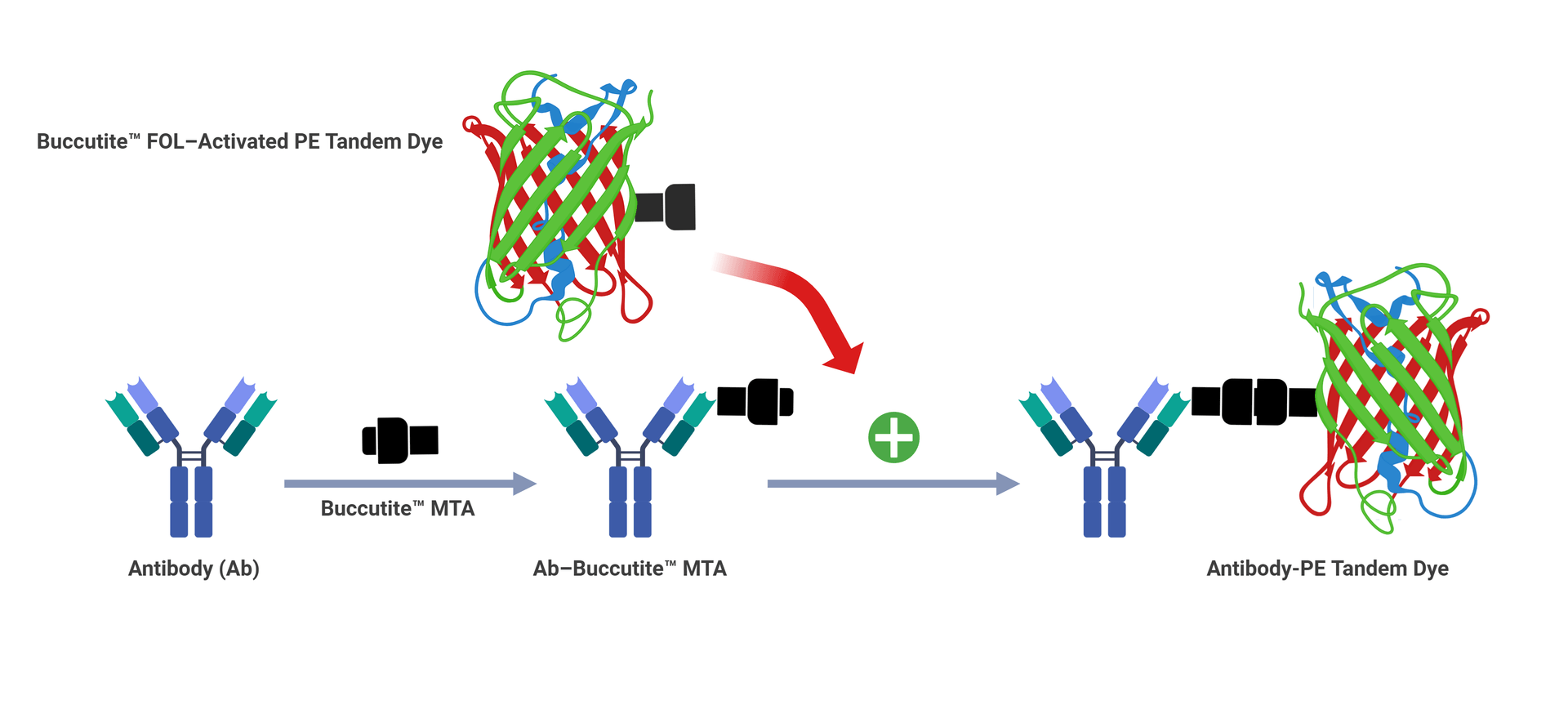Buccutite™ Rapid PE-iFluor® 594 Tandem Antibody Labeling Kit
Microscale Optimized for Labeling 100 ug Antibody Per Reaction
Buccutite™ Rapid PE-iFluor® 594 Tandem Antibody Labeling Kit enables fast and efficient labeling of primary antibodies with a bright PE-iFluor® 594 tandem fluorophore.
- Streamlined workflow: Completes antibody conjugation in under two hours using a simple two-step process
- Small-scale optimized: Each kit supports labeling of up to 100 µg of purified antibody or protein per reaction
- Applications: Ideal for flow cytometry, immunoassays, and spectral panel development using low-abundance markers
- Comparable alternative: Provides a simpler and more reproducible workflow than SMCC-based antibody conjugation kits


| Catalog | Size | Price | Quantity |
|---|---|---|---|
| 1356 | 2 Labelings | Price |
Spectral properties
| Absorbance (nm) | 566 |
| Extinction coefficient (cm -1 M -1) | 1960000 |
| Excitation (nm) | 565 |
| Emission (nm) | 606 |
Storage, safety and handling
| H-phrase | H303, H313, H333 |
| Hazard symbol | XN |
| Intended use | Research Use Only (RUO) |
| R-phrase | R20, R21, R22 |
| UNSPSC | 12171501 |
Contact us
| Telephone | |
| Fax | |
| sales@aatbio.com | |
| International | See distributors |
| Bulk request | Inquire |
| Custom size | Inquire |
| Technical Support | Contact us |
| Request quotation | Request |
| Purchase order | Send to sales@aatbio.com |
| Shipping | Standard overnight for United States, inquire for international |
Page updated on December 21, 2025

